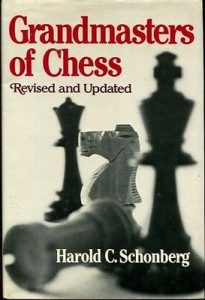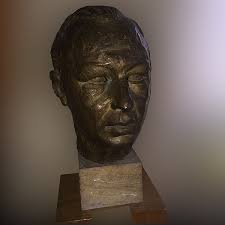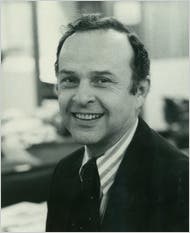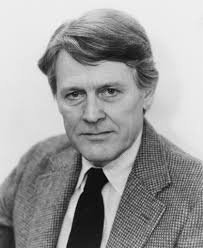The Harold Schonberg case and The New York Times
During the first twelve years of his career, Istomin was fairly well treated by The New York Times. Noel Straus praised the debut of this “gifted pianist”, and the reception of his recitals was generally favorable, even if he was inevitably blamed for his youthful defects. Howard Taubman even raved about his concerts with Casals in Perpignan in 1951 and wrote in December 1955, after hearing him play the Beethoven Fourth Concerto under George Szell: “Istomin proved to be a poet and a thinker. His playing had an astonishing maturity’’. Unfortunately for Istomin, Taubman abandoned responsibility for the music section in 1960 to take over the theatre section, and was replaced by Harold Schonberg.
Schonberg, who had joined The New York Times as a freelancer in 1950, reigned supreme over its music criticism until his retirement in 1980. He succeeded in establishing himself so well, both within the newspaper and in the music world, that he became the first music critic to receive the Pulitzer Prize in 1971. He managed to reach a wide audience, far beyond the circle of music lovers, by using a simple and direct style. The quiet self-confidence of his reviews made his readers feel secure and his taste for provocation seduced them. He also understood that the public was eager for books which would allow them to gain, in an easily accessible way, an overall vision of music. His books were very successful: The Great Pianists (1963, 1987), The Great Conductors (1967) and The Lives of the Great Composers (1970).
 When reading his books and articles today, one can only be surprised that Harold Schonberg received such recognition. It was a populist conception of music criticism. To the prejudices of many of his colleagues, he added many others, starting with a systematic rejection of 20th century music: Stravinsky was highly overrated, serial music was an aberration, the minimalists were idiots. Shostakovich was not very interesting, and Britten even less so. As for Baroque music, it was only emptiness. Regarding performers, his prejudices were also noticeably marked and he singled out a few whipping boys, especially Leonard Bernstein. He could not abide his spectacular way of conducting and did not hesitate to ridicule him, calling him “Peter Pan” and comparing him to Nijinsky. As for the piano, his favorite field, his preferences were for the Russian piano school (he glorified Sviatoslav Richter when he came in 1960) and the romantic virtuosity of the old school. In his book The Great Pianists, he devoted two pages to Jorge Bolet and only mentioned the names of Fleisher, Graffman, Istomin and Katchen in passing.
When reading his books and articles today, one can only be surprised that Harold Schonberg received such recognition. It was a populist conception of music criticism. To the prejudices of many of his colleagues, he added many others, starting with a systematic rejection of 20th century music: Stravinsky was highly overrated, serial music was an aberration, the minimalists were idiots. Shostakovich was not very interesting, and Britten even less so. As for Baroque music, it was only emptiness. Regarding performers, his prejudices were also noticeably marked and he singled out a few whipping boys, especially Leonard Bernstein. He could not abide his spectacular way of conducting and did not hesitate to ridicule him, calling him “Peter Pan” and comparing him to Nijinsky. As for the piano, his favorite field, his preferences were for the Russian piano school (he glorified Sviatoslav Richter when he came in 1960) and the romantic virtuosity of the old school. In his book The Great Pianists, he devoted two pages to Jorge Bolet and only mentioned the names of Fleisher, Graffman, Istomin and Katchen in passing.
His narcissism and arrogance were also remarkable. He bragged about writing his reviews in less than 45 minutes and took spiteful pleasure in mocking those of his colleagues who spent more time. He often came to the concert with the scores, explaining that some musicians were so boring that following the score was the best way to avoid falling asleep. He shamelessly assumed his biased subjectivity: “It is not the problem of the critic to be right or wrong; he must simply express his opinion in an understandable style.”
 This narrow-mindedness and lack of intellectual honesty and respect for music and musicians soon exasperated a large part of the music community. In July 1972, Alexander Schneider wrote an open letter to Schonberg which caused a great deal of mirth. Schonberg also claimed to be an expert in chess and had managed to get himself sent to Reykjavik to report on the famous World Championship between Bobby Fischer and Boris Spassky. The event had kept the whole world on tenterhooks. Schneider said: “All my friends, not only musicians, but also important, intelligent people, no longer sleep at night, waiting for your reports. We all agree that you are the greatest and best chess journalist in the world. And I’m sure all chess players want you to stop writing about music!” Unfortunately for Istomin and many others, Schonberg did not follow his advice. What Schneider may not have known is that Schonberg, probably bored with listening to music, spent a great deal of time reading thrillers and detective novels. He even managed to chronicle them in the New York Times under the pseudonym Newgate Callendar.
This narrow-mindedness and lack of intellectual honesty and respect for music and musicians soon exasperated a large part of the music community. In July 1972, Alexander Schneider wrote an open letter to Schonberg which caused a great deal of mirth. Schonberg also claimed to be an expert in chess and had managed to get himself sent to Reykjavik to report on the famous World Championship between Bobby Fischer and Boris Spassky. The event had kept the whole world on tenterhooks. Schneider said: “All my friends, not only musicians, but also important, intelligent people, no longer sleep at night, waiting for your reports. We all agree that you are the greatest and best chess journalist in the world. And I’m sure all chess players want you to stop writing about music!” Unfortunately for Istomin and many others, Schonberg did not follow his advice. What Schneider may not have known is that Schonberg, probably bored with listening to music, spent a great deal of time reading thrillers and detective novels. He even managed to chronicle them in the New York Times under the pseudonym Newgate Callendar.
Schonberg probably felt a perverse jubilation in conceding some minor qualities to a performer and thereby demonstrating his supposed good faith, in order to give more impact to the murderous sentences that followed. Thus in 1951, after a recital at Carnegie Hall, he began by admitting that Istomin had the potential to play the piano quite well, but was subsequently quick to deplore his metallic tone and recommend that he relax and let the music speak for itself. Sometimes, as in the 1962 review of the Brahms Second Concerto with Bernstein and the New York Philharmonic, Schonberg was unbearably condescending: “Mr. Istomin continues to grow, and in recent years he has become an artist.” In 1973, for another recital at Carnegie Hall, he allowed himself a few compliments on his tone, before repeatedly emphasizing his ultra-professionalism, in order to imply that there was no imagination or emotion in his interpretations.
The only time Harold Schonberg was positive about Istomin was when he played with the Trio – yet he pointed out that while he had excelled in Beethoven’s Triple Concerto, he had previously proven to be more efficient than poetic in the Fourth Concerto.
When Schonberg could not attend a concert, one of his colleagues substituted for him, but his power over the editorial staff was such that Istomin’s chances of getting a favorable review in the New York Times were very low. Only Allen Hughes dared to write one about a performance of the Chopin Second Concerto with the Cleveland Orchestra in 1972. Freelancers knew, and were sometimes reminded, that the senior editor “did not like Istomin”. Howard Klein, for a recital at Carnegie Hall in February 1964, willingly complied. He began with a benign compliment about Istomin’s “modern pianism, technically brilliant, intelligent, controlled and logical”, then followed up by stating that ‘’Sensitivity does not seem one of Mr. Istomin’s fortes, for little of his playing touched the heart.”
Before his recital at Carnegie Hall in November 1971, Istomin was given the honor of a long profile in The New York Times, written by John Gruen who was not under the responsibility of the music editorial. Harold Schonberg was highly displeased with such an exposure which was fairly rare in the columns of this newspaper. The critic who reviewed the concert was Donal Henahan, but it could have been signed by Harold Schonberg. The title was appealing: “Istomin, at Piano, Adds Refinement”. But the rest was crushing: ‘’The pianist went to each piece like a draftsman, scrupulously linking in details and working out problems with T-square and compass. Music is no joke to this fine artist.” Apart from a Chopin Nocturne and two pieces by Brahms, nothing was spared. Henahan had found the Schubert Sonata in D Major to be deadly boring. The conclusion of his review was meant to be cruel: “If one had to name the single work least congenial in Mr Istomin’s antiflamboyant style, it might well be Chopin’s ‘Military’ Polonaise which ended the recital by going off like a wet firecracker.’’ What made this statement rather funny, although unintentionally so, was that Henahan had confused the Polonaise Heroic with the Military! It is debatable whether this was enough to comfort Istomin, even though Harriett Johnson had published a dithyrambic review of the same recital in the New York Post, calling him a “poet of introspection.”
Surprisingly, Donal Henahan, who had still been quite harsh to Istomin in June 1978 (again about Schubert’s Sonata in D Major, the length of which he could not tolerate), became much more open-minded towards Istomin from 1980. By this time, he had replaced Schonberg as senior editor and probably felt freer to write what he thought. In May and October of that year, he heaped praise upon Istomin’s performances of Beethoven’s Third Concerto and Tchaikovsky’s First. From then on, Istomin’s concerts were well received in the New York Times, at least without acrimony. Schonberg’s time had passed, although he continued to work for the newspaper as a freelancer from time to time.
After his retirement, Schonberg had several opportunities to meet Istomin, notably at the inaugural concert of President Reagan in January 1981 and on the jury of the Santander Competition in 1987. Schonberg behaved as if they had always been friends, but Istomin made a point of keeping his distance from him.




